Results
-
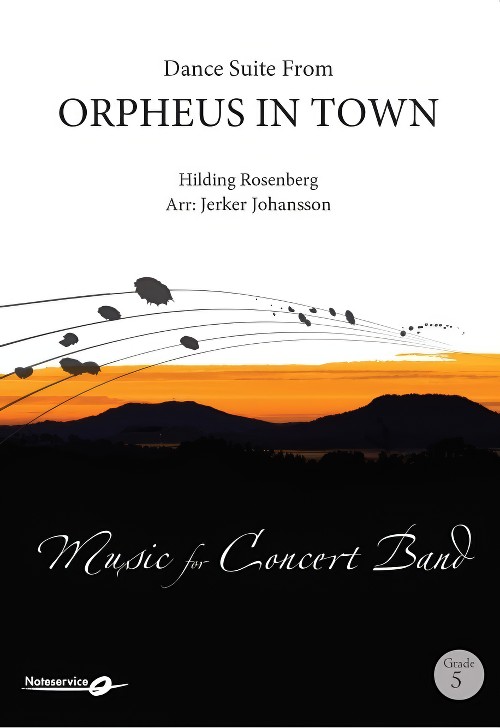 £242.50
£242.50Orpheus in Town, Dance Suite from (Concert Band - Score and Parts) - Rosenberg, Hilding - Johansson, Jerker
Dance Suite in Seven Movements. Op.75. Orpheus In Town. In 1936 the Stockholm Concert Hall was given its most distinguished artistic adornment, Carl Milles' Orpheus fountain. A Greek god lets his voice and the sounds of his lyre float over the rush and bustle of the big city far up in Ultima Thule. Two choreographers at the Stockholm Opera, Julian Algo and Vera Sager, had a brainwave. Why should Orpheus merely be a statue, a symbol of the beauty and inspiring power of music, why not give the myth about him its special Stockholm chapter as well? This is what happened: On the stage we see the columned facade of the Concert Hall and in front of it the statue group with Orpheus and the eight enraptured listeners. Suddenly the figures come to life, jump down from their pedestal and dance into the crowd at the marketplace. Orpheus, who is consumed by longing for Eurydice, begins looking for his beloved, first among other well-known sculptures in town, then in restaurants and nightclubs. At last he thinks he recognises her in a fashionable society woman and brings her to the Concert Hall. However, faced with the threat of having to spend her life in bronze at Orpheus' side, she runs away. She wasn't Eurydice after all. Or was she? For this ballet, which had its first performance at the Stockholm Opera in 1938, Hilding Rosenberg wrote vital and entertaining music in a style which is unusually to the point, and with a bright and strong orchestration. The music in the Dance Suite from Orpheus in Town is taken from the dance scenes at the nightclub: guests and a bartender perform, finally also Orpheus and his entourage. The suite consists of: 1. Rhythm of the Times (2.00); 2. Bartender's Dance (1.30); 3. Girl's Dance (1.00); 4. Dance of the Negress (2.30); 5. Trio Dance (1.30); 6. Tango (2.00); 7. Finale (1.30). Total duration: 14.00.
Estimated dispatch 7-14 working days
-
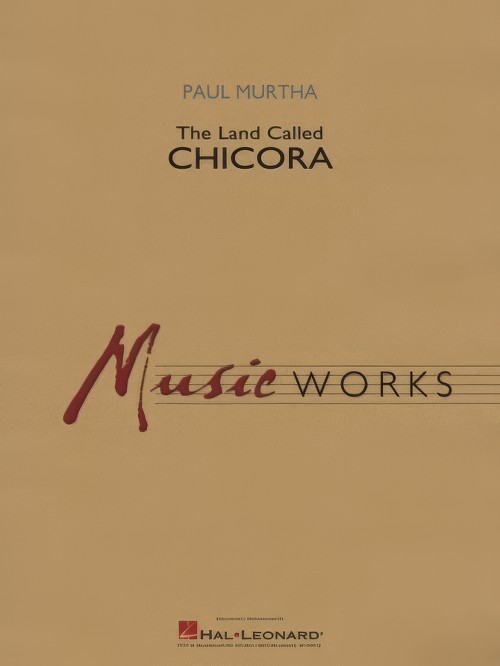 £79.99
£79.99Chicora, The Land Called (Concert Band - Score and Parts) - Murtha, Paul
Inspired by the legend of a mythical ancient kingdom (in present day South Carolina), The Land Called Chicora is a programmatic work telling of the 16th century Spanish and French explorers in search of this treasured civilization. With descriptive scenes ranging from the majestic sailing ships along the coast, to the foreboding forests of the interior, to the impending treachery of the natives' threatened way of life, this impressive work is both magical and rewarding. Duration: 6.30
Estimated dispatch 7-14 working days
-
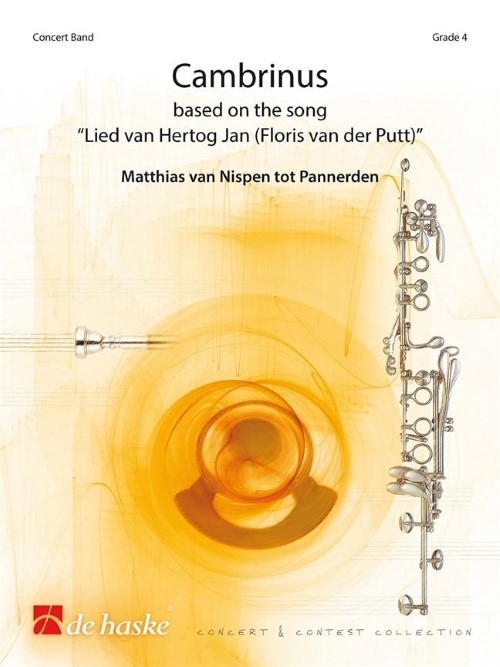 £134.99
£134.99Cambrinus (Concert Band - Score and Parts) - Pannerden, Matthias Van Nispen tot
The name Cambrinus, a corrupted variation on 'Jan Primus' (John the First), refers to the flamboyant John I of Brabant, who was the Duke of the Dutch provinces Brabant and Limburg, in the second half of the 13th century. This piece of music tells the story of this notable man, starting with the Battle of Worringen in 1288, where he scored a glorious victory, followed by an exuberant celebration in which he also contemplates about the suffering he and his men have caused. The works offers exciting energetic musical scenes with lots of action, as well as beautiful romantic and heroic themes offering plenty of opportunities for your band to unfold all its qualities. Duration: 7.15
Estimated dispatch 7-14 working days
-
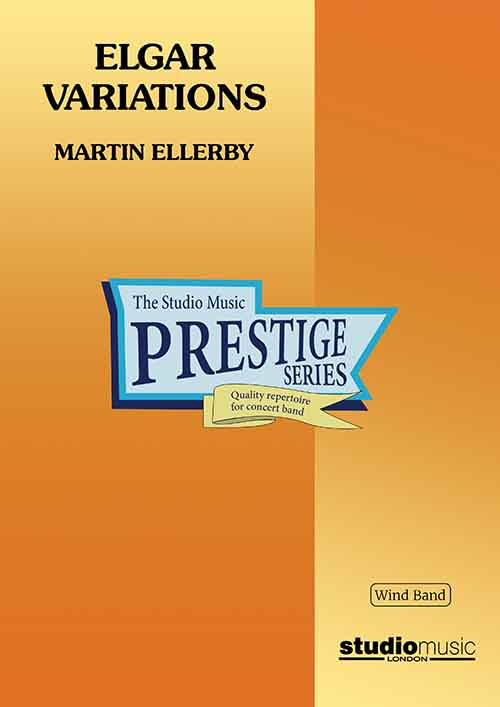 £164.95
£164.95Elgar Variations (Concert Band - Score and Parts) - Ellerby, Martin
The year 2007 marked the 150th anniversary of the birth of the British composer Sir Edward Elgar (1857-1934) and as such I thought it an appropriate moment to write something in tribute to this event. There are quite a few enigmas about this piece and they are all intentional! First and foremost is that the variations are not constructed on any of Elgar's actual themes. Rather I have written a sequence of contrasting sections (all played without a break) on the essence and character of his musical style. I have also written this work with bands, the soloists within, conductors and, not least, their audience firmly in mind. The language is essentially tonal and the test musical rather than overtly technical. There are no tempo indications other than suggested metronome marks. I have deliberately kept things to a minimum as the true test here is to find the style and interpret that aspect over the whole structure. Whereas the faster sections are more or less self explanatory the slower parts require deliberate rubato and much feeling. This is for the conductors to discover and I encourage them to do so. Adjudicators should be fully aware that I sanction this aspect but it requires an insight and understanding to successfully execute so 'any old thing' will not suffice! The 'variation' commencing at rehearsal letter P is the emotional core of the piece and requires a passionate but not saccharine approach to pacing and sensuality. The cadenza type material is built into the process rather than being a separate sequence of entities. There are many allusions to the music of Elgar here without recourse to blatant pastiche - if it is thought of as a series of songs and dances this may help. The final comment is the dedication, after one of Elgar's own but subtly adjusted: to my friend pictured within - never to be revealed - now there's an enigma!- Martin EllerbyDuration: 14.00Recorded on Polyphonic QPRM155D Scenes from Childhood (Great British Music for Wind Band Vol.15), Royal Northern College of Music Wind Orchestra
Estimated dispatch 7-14 working days
-
 £32.95
£32.95Elgar Variations (Concert Band - Score only) - Ellerby, Martin
The year 2007 marked the 150th anniversary of the birth of the British composer Sir Edward Elgar (1857-1934) and as such I thought it an appropriate moment to write something in tribute to this event. There are quite a few enigmas about this piece and they are all intentional! First and foremost is that the variations are not constructed on any of Elgar's actual themes. Rather I have written a sequence of contrasting sections (all played without a break) on the essence and character of his musical style. I have also written this work with bands, the soloists within, conductors and, not least, their audience firmly in mind. The language is essentially tonal and the test musical rather than overtly technical. There are no tempo indications other than suggested metronome marks. I have deliberately kept things to a minimum as the true test here is to find the style and interpret that aspect over the whole structure. Whereas the faster sections are more or less self explanatory the slower parts require deliberate rubato and much feeling. This is for the conductors to discover and I encourage them to do so. Adjudicators should be fully aware that I sanction this aspect but it requires an insight and understanding to successfully execute so 'any old thing' will not suffice! The 'variation' commencing at rehearsal letter P is the emotional core of the piece and requires a passionate but not saccharine approach to pacing and sensuality. The cadenza type material is built into the process rather than being a separate sequence of entities. There are many allusions to the music of Elgar here without recourse to blatant pastiche - if it is thought of as a series of songs and dances this may help. The final comment is the dedication, after one of Elgar's own but subtly adjusted: to my friend pictured within - never to be revealed - now there's an enigma!- Martin EllerbyDuration: 14.00Recorded on Polyphonic QPRM155D Scenes from Childhood (Great British Music for Wind Band Vol.15), Royal Northern College of Music Wind Orchestra
Estimated dispatch 7-14 working days
-
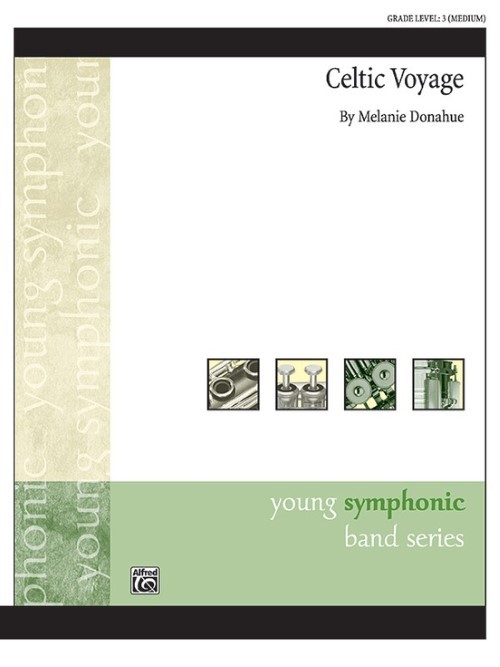 £53.95
£53.95Celtic Voyage (Concert Band - Score and Parts) - Donahue, Melanie J.
Inspired by the many hardships of the Irish immigrants, this piece brings hope of a new world, a new lease on life and a second chance. The piece begins with the sound of the ocean in the background (played by the ocean drum) while a solo flute plays the main theme. As the piece develops the theme represents several scenes: first, the knowledge that life needs to change due to the famine and hardships of the time; second, the immigrants begin their move to America; third, the arrival in America and seeing the statue of Liberty, which is the climactic moment of the piece; and finally, ending with the same idea in the beginning of the piece but now as memory and longing for Ireland.Duration: 3.30
Estimated dispatch 7-14 working days
-
 £70.50
£70.50Boz Dances (from Master Humpreys Clock) (Concert Band - Score and Parts) - Binney, Malcolm
Master Humphrey's Clock was inspired by the weekly periodical produced by Charles Dickens in which appeared a miscellany of short sketches. Malcolm Binney's work was commissioned for the Kent County Wind Orchestra, it therefore seemed appropriate that a piece writen especially for Kentish performers, should draw, for inspiration on the literarary works of one of the County's most famous inhabitants. The Boz Dances (Boz was a pseudonym under which Dickens wrote) are taken from all four parts of extended work and explore the miriad of personalities, childhood fantasies of theatre, fairy tales and imagined scenes so loved by Dickens. Great fun, inspired, exhilarating and thrilling to listen to.Duration: 10:30
Estimated dispatch 7-14 working days
-
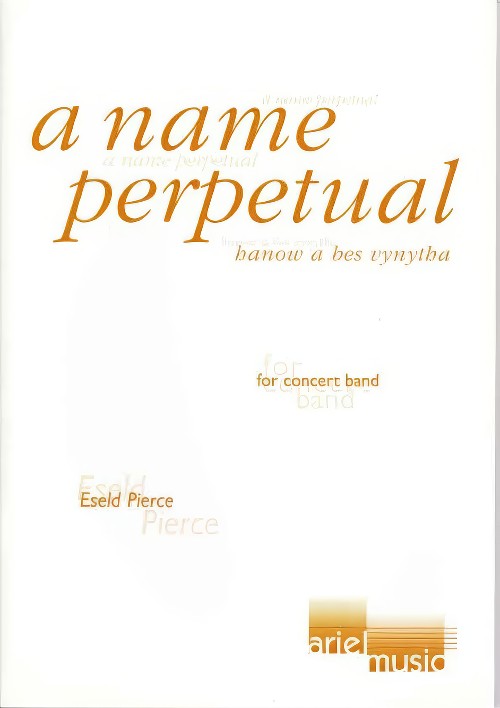 £115.00
£115.00NAME PERPETUAL, A (Concert Band) - Pierce, Eseld
Under the leadership of Michael An Gof and Thomas Flamanck, a Cornish host, sometimes estimated to number as many as 15,000, marched to London in protest against excessive taxation. Arriving at Blackheath, they were attacked by the King's army and defeated, and the two rebel leaders were hung, drawn and quartered. On his way to his death, An Gof stated that he would have "a name perpetual and a fame permanent and immortal". A Name Perpetual tells the story of the Rebellion in four connected scenes. The music includes strong elements of the Celtic music tradition, being structured around an old Cornish folk tune. The first scene introduces fragments of the folk theme and reflects the anguish of the Cornish people. The second scene opens with the folk theme on solo piccolo and, as different instruments enter one by one, the march is depicted with its accumulation of forces en route. The march halts suddenly as the Cornishmen discover the unexpected arrival of the English army and the subsequent music portrays the Blackheath Skirmish. In this scene the orchestra is divided into four parts, each working independently to create a sense of chaos, with the stronger elements of the brass and bass instruments representing the English, while the woodwind and saxophones represent the Cornish, struggling to sustain the folk tune throughout the battle. Eventually all the parts come together and the final section is a lament for the lost Cornishmen, fading away to leave only a haunting off-stage trumpet solo.
Estimated dispatch 7-14 working days
-
 £149.99
£149.99The Road to the West Wind Band Set (Score & Parts)
As he did before in the often played and commonly appreciated 'Lord Tullamore', in which he poetically depicted the landscape and the cultural elements of a small Irish village, in his composition 'The Road to the West' Carl Wittrock has sketched pioneer existence in America in a cinematic manner.In 'The Road to the West' the composer has tried to capture images of pioneer life during the period dating from 1850 to 1890, the days of the so-called Wild West.In those days, the Wild West used to be the territory west of civilization, the domain of cowboys, trappers, and other fortune hunters. In short, ample ingredients for a captivating story.In the first scene a lonely adventurer struggles against nature and the elements. After an exciting adventure he passes through 'the Plains', where majestic views alternated by colossal mountain ranges display an almost unimaginable beauty.After weeks of isolation civilization is reached again. 'The Saloon' is the perfect meeting place - here news is exchanged and hilarious scenes regularly take place. 08:00
Estimated dispatch 7-14 working days
-
 £37.43
£37.43In the Bleak Midwinter - Wind Band (Holst arr. Andrew Wainwright)
A stunning setting of this favorite carol, featuring ethereal shimmering harmony, depicting the wintry scenes that the carol describes. Begins and ends mysteriously, with a stirring central climax with the full band. PDF download includes score and full set of parts. To view a video of Naden Band of the Royal Canadian Navy performing the work please visiti www.youtube.com/watch?v=_0C3SBxyrBg Sheet music available from : UK: www.wind-band-music.co.uk USA: www.solidbrassmusic.com Difficulty Level: Medium Advanced Instrumentation: Piccolo Flute 1-2 Oboe Bassoon Clarinet in Bb 1-3 Bass Clarinet in Bb Alto Saxophone Tenor Saxophone Baritone Saxophone Trumpet in Bb Horn in F 1-4 Trombone 1-2 Bass Trombone Euphonium Tuba Double Bass Suspended Cymbal Vibraphone Glockenspiel
In stock: Estimated dispatch 1-3 days
